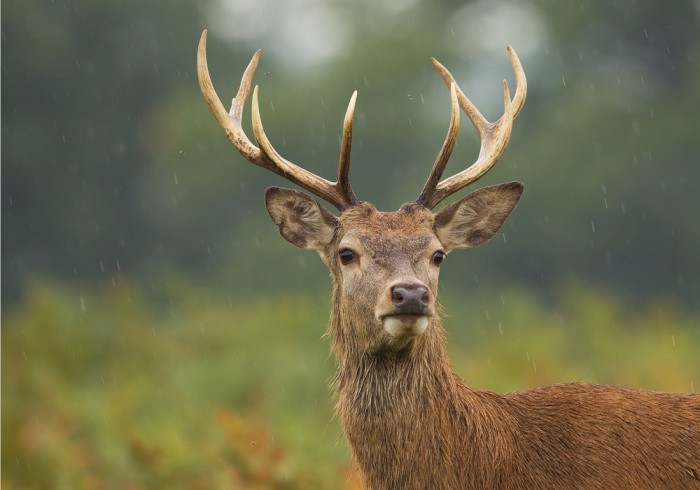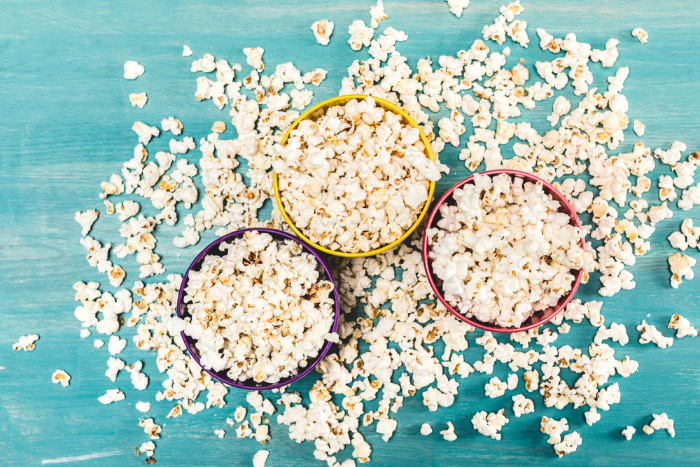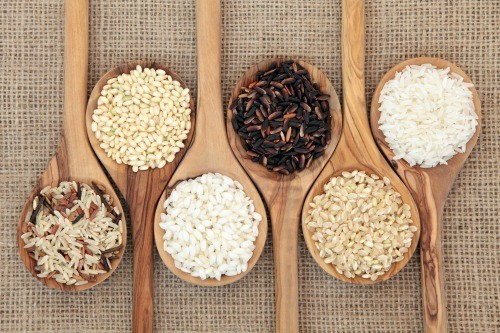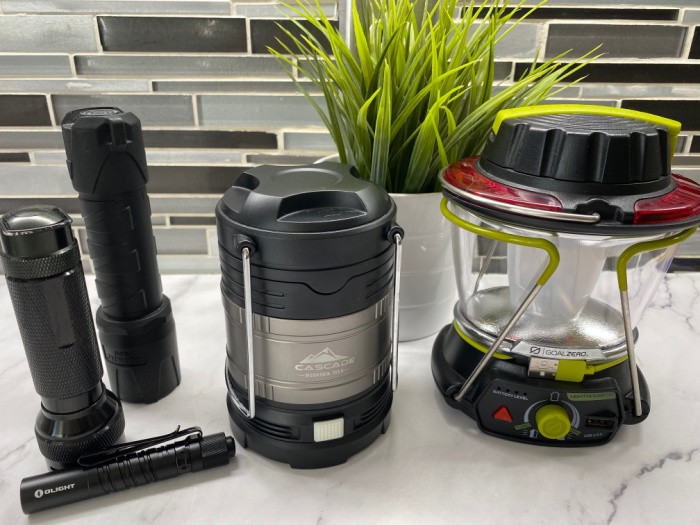20 Things to Hunt for When You Need to Feed Your Family
When times get tough and you find yourself in need of food for your family, hunting can be a valuable skill to have. Not only does it provide a source of sustenance, but it also connects us to our primal instincts and the natural world around us. Today, I want to talk about 20 things to hunt for when you need to feed your family.
You may not consider yourself as a hunter, but hunting wildlife can prove to be a lifesaver in really tough times. In our modern world, many of us have gotten away from foraging for food, particularly when it comes to birds and animals. It may sound strange, but many states rely on annual hunts of all kinds to maintain a balance of wildlife that can be sustained in an effort for conservation.
As a young couple, Mark used to hunt with family and friends. At times, he provided venison from the deer hunt, or pheasant meat from a successful bird hunting trip. It took me a while to get used to fixing some of this meat, and I really struggled to eat the “gamy” tasting deer meat. We often gave it away. Hunting can be an option when the grocery stores are empty and your family has hunger from lack of food.

20 Things to Hunt for When You Need to Feed Your Family
1. Deer and Other Big Game Animals
Deer are abundant in many regions and offer a significant amount of meat. With a proper hunting license and by following regulations, deer hunting can be a sustainable way to provide food for your family from a successful big game hunt. Here in Utah, they have an annual hunt in the fall for mule deer. In years past, almost anyone could go out and hunt during the regulated hunting season. Now they have you apply and you hope you “draw out” during the lottery.
The annual deer hunt includes hunts with various types of weapons like bows and arrows, standard rifles, and muzzleloaders. The state also dictates places for hunting bucks only, doe hunting allowed, etc. Elsewhere in the country, they have other species of deer like the white tail which is smaller in size.
Other big game animals available in some locations for hunting are elk, antelope, moose, pronghorn and bighorn sheep, Rocky Mountain goats, bison, and bear. The meat from these animals differs greatly. Some taste like beef, others are more gamy and taste better as jerky snacks, in tacos, or smothered with condiments as hamburgers.
2. Wild Turkey
Wild turkeys are a great option for those looking for lean protein. They can be found in various habitats and offer a delicious addition to any meal.
3. Rabbits
Rabbits are small game animals that reproduce rapidly, making them an excellent choice for hunting to feed your family. Depending on your location, they can be caught using traps or hunted with firearms. There are various species of rabbits and our most common types here are cottontail and jackrabbits. It’s my understanding that the jackrabbits are less desirable as game meat since they tend to be prone to sickness more often.
4. Squirrels
Squirrels are another small game animal that can provide a good source of meat. They are agile and can be challenging to hunt, but they offer a tasty treat once caught. As with other game meat sources, squirrels have many species and some may have restrictions. Be sure to check your state’s Hunting Regulations that should be posted online.
As small animals squirrels don’t provide a lot of meat from each one killed. A good day of hunting may require multiple animals to support a family’s meal preparation.
5. Ducks
Waterfowl, such as ducks, are plentiful in many areas and can be hunted during specific seasons. Their meat is flavorful and can be used in a variety of dishes. Most hunting seasons for ducks take place in the fall as the ducks are migrating south for the winter. Be sure to check your area’s regulations since some ducks are restricted from being hunted.
Ducks come in many variations, from the small teal and wood ducks to the larger mallards and pintails. Duck hunting can be a real challenge due to the speed of their flight. You can tell a duck from other wild birds based on how fast their wings are flapping. Ducks have more of a gamy flavor than pheasants and wild turkeys, so your family may need to develop an “acquired taste” for the meat. It is high in protein to help with your nutritional needs.
6. Geese
Similar to ducks, geese provide a rich source of meat that can be hunted in specific seasons. They often travel in flocks, making them easier to locate.
7. Pheasants
Pheasants are popular game birds known for their vibrant plumage and delicious meat. They can be found in fields and grasslands and offer a flavorful alternative to chicken. If you can find some open acres of land where the grains have been harvested, this could prove to be a prime hunting ground for pheasants.
8. Quail
Quail hunting is a popular activity in many regions. These small birds can be found in brushy areas and provide a tasty addition to any meal. Due to their small size, it will take a bunch of these to constitute a full meal for you and your family.
9. Fish
Fishing is an excellent way to provide food for your family. Whether it’s freshwater fish like bass or trout, or saltwater fish like some species of salmon or snapper, there are plenty of options to choose from. You won’t have to spend a lot of money on gear to get started, depending on the type of fish you’re going after.
Learning to catch fish can be tricky, and you need to develop some patience. Some people enjoy just casting the bait and waiting for fish to seek out the bait, while others like the always-moving action of fly fishing. You may be lucky to know someone with a fishing boat so you can go trolling for fish on your favorite lake.
10. Crabs
If you live near the coast, crabbing can be a fun and rewarding way to gather food for your family. Crabs can be caught using traps or nets and offer a delicious seafood option.
11. Clams
Clam digging is a traditional method of gathering shellfish. With a shovel or rake, you can harvest clams from sandy beaches or mud flats, providing a nutritious and versatile ingredient.
12. Wild Boar
In some areas, wild boar populations have become invasive, particularly in the southern states and out west. Hunting these animals not only helps control their numbers but also provides a source of flavorful meat.
Do your research and learn which species are safe to eat. Wild pigs are often referred to as javelina and are related to domestic pigs. Some cultures eat javelina, but not all us U.S. folks feel comfortable doing so.
13. Raccoons
While raccoons are not traditionally associated with hunting for food, they can be a viable option in desperate times. Properly prepared, raccoon meat can be tasty and nutritious.
14. Pigeons
Pigeons are often considered pests in urban areas, but they can be hunted for food. Look for them in parks or city spaces and treat yourself to a unique culinary experience. They may be protected in your location, so check the hunting regulations. Another issue is being allowed to hunt in any urban area for safety reasons. Don’t break the law, check things out first!
15. Edible Insects
Insects may not be the first thing that comes to mind when thinking about hunting, but they are a rich source of protein. Crickets, worms, and grasshoppers can be foraged in many regions.
16. Game Birds
Hunting for game birds such as grouse, partridge, or woodcock can provide a delicious alternative to store-bought poultry. These birds can be found in wooded areas and offer a unique flavor.
17. Wild Edibles
Hunting for wild edibles, such as mushrooms, berries, or nuts, can be a sustainable way to supplement your family’s diet and prove your proficiency at being self-sufficient. Just make sure to properly identify any plants before consuming them.
18. Small Game Birds
Smaller game birds like doves are abundant in many regions and can provide a quick and tasty meal. They are often found in open fields or near water sources.
19. Wild Sheep or Goats
In certain mountainous regions, wild sheep or goats can be hunted for their meat. This requires specialized skills and equipment, but the reward is well worth the effort.
20. Snakes
While not for the faint of heart, snakes can be hunted for their meat. In some cultures, snake meat is considered a delicacy and can be prepared in various ways.
Can I get good protein without eating hunted meat?
Many plant-based food items on your list of groceries can provide the protein needed in your diet. Beans are particularly high in protein. This is another reason to plan on having a well-stocked garden every year.
We have a neighbor who has chickens in her backyard. The only thing she does is “hunt” for eggs every day. She is so kind and often brings us some beautiful brown eggs that we love to eat.
- Flashlights also Solar Lantern
- Javelina: Everything You Need to Know
- What Happens When Your Prepping Supplies Are Gone?
- World’s Best Clam Chowder
Final Word
Remember, hunting for food should always be done legally and responsibly, respecting local regulations and seasons. It is essential to understand the laws in your area and obtain the necessary licenses and permits. Hunting can be an incredible way to provide food for your family in an emergency. May God Bless this World, Linda
Copyright Images: Red Male Deer In Field Depositphotos_107441328_S by Mzphoto, Wild Turkeys Depositphotos_7132711_S By Kornienkoalex























SHTF hunting ain’t regular hunting. “Game” is everything. Robin stew and a side of possum fat can go a long ways. Trapping, trotlining and things of that nature will take the place of leisurely spot n stalks cause other work has to get done. Game will dry up quickly. How quick? Well in the 30s Oklahoma wiped out the Deer, elk and such in bout a year and we are 7 times more populated now than then easily.
Difference is most folks ain’t got no idea what to do with it once they get it. They think meat grows from Styrofoam.
Gotta know what to look for on healthy and not healthy animals too. Liver spots, CWD etc.
Hi Matt, I totally agree, I have several family member that fill their freezers or pressure can their meat all year long. It’s all about the tags and the permits. My granddaughter in AZ married a hunter just bought a bow and arrow, got his first deer (with a bow and arrow) after practicing with it for two days! He had a tag got it the first day! Squeal! Now I need to Google Liver spots and I had to Google CWD (Chronic Wasting Disease). Wow, the deer, elk and whatever was wiped out in the 30s! WOW!! Great comment my friend, I always learn something new from you! Thank you! Linda
Matt – likely 90% or more of the population wouldn’t know the end of a rifle or shotgun to point at a game animal or bird!! Selection of the fittest!
HI Leanne, I have to agree with you on that. Plus the fact if they are not used to hunting, they may not realize the meat that’s available in their area. Linda
Linda – there are some very very nice books and such on wild edibles. A good friend sent me a book called Foraging in Wyoming – it is a notebook to fill in when out in the wilds. She knows that I am familiar with a lot of plants that are edible and not edible. She knows that I am familiar with those plants that are or have medicinal properties. Now I just need to get a book that has really good photos of the flora in Wyoming!! Along with the notebook, she included two pocket guides: Wyoming trees and wildflowers and Wyoming birds. Now, I am not so much into birding but always good to know what is out there. I am going to search for other guides that I might find useful as well.
Basically, I mention all this because there are people who might not be aware that there are look-alike plants: some edible and some poisonous. In the PacNW, I was very familiar with camas AND death camas. They are so similar in looks but one (can you guess which one) is poisonous!!
As Matt mentioned, we need to know what a healthy animal looks like vs an unhealthy one that has the potential to cause us great harm. The same is true for plant-life!
HI Leanne, I bought all the books you suggested over the years. Some are in the storage unit, it will be months before this house gets done. We are now almost 2-1/2 years living in one bedroom. Great reminder to never eat a sick animal and we must know our plants before we HAVE to know them. Linda
How many of these have you actually tasted? How many have you hunted and prepared? I have tasted a few, but not for quite a few years… remember if you are in tough times to make sure and save any fat or grease, as that is one of the harder needs to find! Good thought provoking list! Thanks Linda!
Hi Jan, well, I live in Utah and we are a family of hunters and fisherman. Not my husband now, the younger generation has taken on the hunting. Everyone in the family likes to fish, I told my husband he can’t bring a deer home, (he did once). He and I have brought home the following after being out in the wild: deer (once), ducks, pheasant, rabbits, wild turkey, all kinds of fish from Alaska and of course Utah, clams and crabs. I’m not saying I like to clean and prep them but I have done more than my share. Please note I could easily be a vegetarian! LOL! Linda
Awesome! I have eaten snake, a rattler that almost bit me as a preteen, and bear, elk, deer, rabbit, but I did not hunt most of them… lots to learn!
HI Jan, I have eaten elk that someone gave us. My nephew hunts bear with a tag or license. The rattler story, oh my gosh, glad you missed be bitten by it! I have never tasted snake, wow! Linda
You know what they say… tastes like chicken… I really do not remember what it tasted like…
Hi Jan, LOL! Now I have the giggles, “rabbit tastes like chicken”, “elk tastes better than beef”. I think my taste buds are way different. I may have to be a vegetarian! I loved your comment! Linda
One of my go-to plants for foraging is Beggertick, one of the Biden varieties . It’s very common in the South, has multiple white flowers with dark centers, and when it goes to seed, the little 1/2” sticks with the pronged ends will stick all over your clothes and pets. Pick and wash the young leaves, and they make the best spinach ever. Pick and wash the middle-aged leaves, and you will have to boil them once, pour the water off, and then boil until tender. Old leaves don’t get real tender, lol. It makes a great side dish, but, yes, this is that pesky weed you try and get rid of every year.